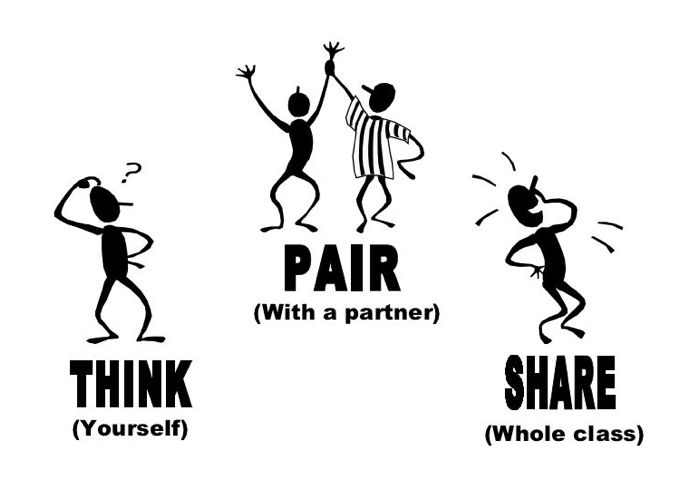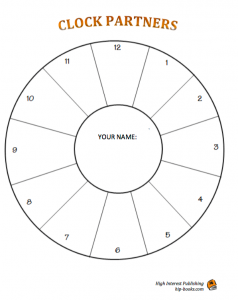Vary your partner talk routines with different pairings for every hour of the day.
Provide each student with a copy of the blank CLOCK PARTNERS reproducible on the left.
Have them circulate around the room to make “appointments” for each hour on the clock. (It might be necessary to explicitly model and demonstrate this process.) The key is to ensure that if Corey writes Haley on his 1:00 appointment, Haley must also write Corey as her 1:00 appointment. When the time is up, students should (ideally) have 12 names in addition to their own on the clock.
Throughout the day, whenever there is apartner talk opportunity, tell students to meet with their 2:00 appointment or their 7:00 appointment, etc. (Needless to say, it’s not necessary for the appointment times to match the actual time of day.)
TIPS, TOOLS & TECHNIQUES
Clock partners provide opportunities for students to meet with a range of partners and hear different perspectives. They also force students to get up and move around during partner talk.
When forming partners, students do not have the option of turning down appointments. If someone asks for a time on your clock and you have it available, you must take that appointment.
Inevitably, some students will be missing a partner for one or two times on their clocks. You’ll often hear calls like, “Who has 3:00 available?” When the allocated time is up, you might want to get everyone’s attention and call out numbers to try to fill those final spaces. If empty appointments still remain (and there shouldn’t be more than one or two on anyone’s clock), come up with a solution like, “When that time is called, you may join the pair of your choice.”
Some teachers like to assign a few specific partnerships at the outset. (You can do this by preparing the clocks before handing them out.)
Clock partnerships can last a day, a few days or even a week. (After a week, you’re pretty much guaranteed to have a few students lose their clocks.)

- THINK: Think about your response, quietly and independently.
- PAIR: Get together with a partner to discuss your thinking.
- SHARE: Share your thoughts with the larger group.


